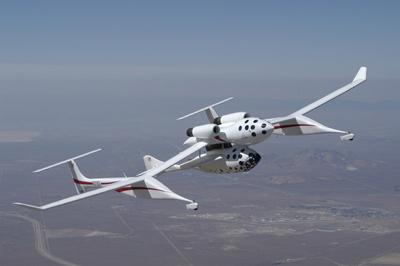 By Nathan Wong
By Nathan Wong
Part five of a five-part series about going back to the Moon, by Google Lunar X PRIZE technical consultant Nathan Wong.
Over the past four articles, I have written about challenges and benefits of going back to the Moon, as well as looking at what might be on the horizon in terms of robotic development, but how do we get there from where we are today? Current missions to the Moon must be sustainable in order for this advancement to continue. In fact one of the three major goals of the Google Lunar X PRIZE is to help develop pathways for sustainable exploration. I will look at sustainability from two different viewpoints: technical and financial sustainability.
Technical Sustainability
For the technical sustainability of the Google Lunar X PRIZE I will look at three different aspects. The first deals with space situational awareness or minimizing the threat of orbital debris damage while in space. NASA currently tracks over 20,000 debris items in space. These items range in size from centimeters to meters across flying around the Earth at speeds around 8 km/s (5 mi/s). This space debris comes from a variety of sources such as pieces of rockets, satellites, or other space missions. Additionally small meteorites can hit space objects and break them into more pieces creating more debris. For debris that is created closer to Earth, drag caused by the atmosphere will deorbit the debris in 10s of years, but for items farther out, such as geostationary orbit (satellites remain above the same point on Earth) debris can remain in orbit well beyond a human lifetime.

Although these 20,000 debris items may seem like a lot, it is still manageable, and although space debris numbers are growing, so are the efforts to reduce the amount of space debris and mitigate the risks. Both satellite and rocket manufacturers are more aware of the responsibility to maintain space as a natural resource that must be protected from damage. Google Lunar X PRIZE teams should also consider using sustainable practices to ensure that both Earth and Lunar orbit debris are minimized so that future missions can continue with minimal risk associated with space debris.
In addition to protecting the orbits around the Earth and the Moon, it is also important to protect the surface. The Committee on Space Research (COSPAR) has in place planetary protection guidelines mostly to protect from biological contamination. These guidelines are dependent on mission characteristics and the planetary body that is being visited. The Moon is a class two target on a five point scale, so the risk associated with biological contamination is fairly low compared to that of something like Mars or Europa.
A more relevant set of guidelines for the Google Lunar X PRIZE is the NASA guidelines for protection of lunar artifacts as two of the bonus prizes are awarded for visiting lunar heritage sites. These guidelines are only recommendations, not law and are written with respect to United States heritage items, but provide a good baseline to protect any heritage items on the lunar surface. The guidelines provide recommendations for both flyover and surface mobility and well as speed guidelines and how to deal with your craft at the end of the mission so as to reduce the possibility of contamination or damage to a heritage item.
Finally it is important that your technical design is sustainable. That can come in a number of different ways from making sure you have a plan for your vehicle once the mission is done, to using commercial off the shelf parts in your design. Using standard commercial pieces can potentially reduce costs, ease design iterations, and help standardize payload interfaces.
Financial Sustainability
The first X PRIZE was the Ansari X PRIZE with a prize purse of $10 million given to a single team that successfully launched a manned vehicle to space twice within one week. That prize was won on October 4, 2004 by the Scaled Composites team, and is inspiration for the Virgin Galactic vehicle and mission design. Although that prize was won more than 8 years ago now, a manned suborbital craft has not gone back to space and there are a limited amount of companies in the suborbital spaceflight business.
As stated before one of the three main goals of the Google Lunar X PRIZE is to develop pathways for sustainable exploration. One way of helping to promote this sustainability is with the prize design. Instead of having one winner as in the Ansari X PRIZE, the Google Lunar X PRIZE has a second place prize that should foster technological development even after the grand prize is won. Another aspect of the Google Lunar X PRIZE that will help promote sustainability is the relatively small prize purse with respect to the overall mission costs. For the Ansari X PRIZE development costs for SpaceShipOne came in at about $28 million. The prize purse provided recovered about a third of that cost. That fraction will be significantly lower with the Google Lunar X PRIZE with substantially larger mission costs.

Even if a team wins the grand prize ($20 million) and the maximum amount of bonus prizes ($5 million) there is still a large funding gap that must be accounted for. This funding gap forces the team to think about additional sources of funding from the Google Lunar X PRIZE mission or from future work based of the work completed earlier. Some examples of this include the NASA Innovative Lunar Data Demonstration (ILDD) program that will purchase up to $30 million for lunar data. Although this program is only open to teams from the United States, other government agencies are looking at similar programs. Teams can also sell payload space for scientists to run experiments on the lunar surface.
Although the odds are against 24 different companies providing continued lunar access beyond the Google Lunar X PRIZE, ideas, design, and personnel from these teams will continue to live on. Outside of the competition environment, there may be more room for cooperation. Teams with complementary technologies working together to get farther than they could alone. Companies could share rides to the Moon, work through the design challenges associated with a lunar mission, find new benefits from continued exploration, and continue using advances in robotics to accomplish new and exciting goals. The Google Lunar X PRIZE is hopefully just the start of continued commercial space exploration.
Visit X PRIZE at xprize.org, follow us on Facebook, Twitter and Google+, and get our Newsletter to stay informed.
This blog post is brought to you by Shell, our Exploration Prize Group sponsor.